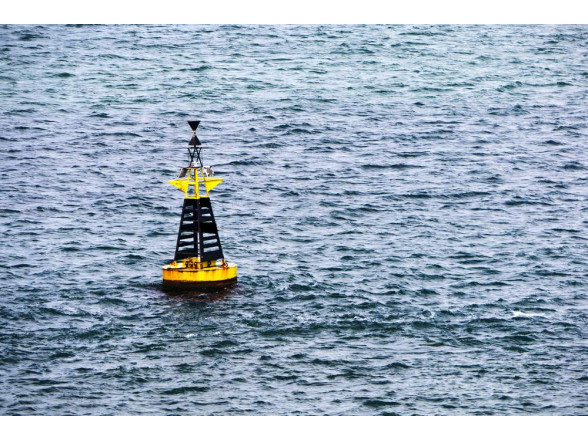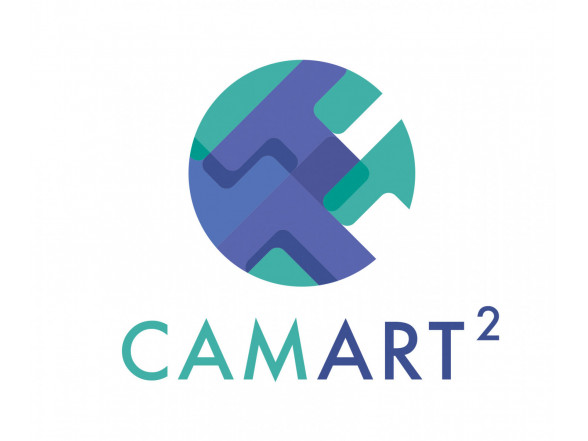Thanks to the infrastructure upgrade that has taken place at the Institute of Solid State Physics, University of Latvia (ISSP UL) during the course of implementation of the CAMART2 project, it is possible for the researchers to take various optical measurements, develop sensors, and carry out prototyping of new devices based on the new technologies, which, on their turn, can be commercialized. The ISSP UL scientists can offer European-level knowledge and skills and do their research using state-of-the-art equipment. This materializes in cooperation with both European Space Agency and CERN. One of the latest developments is a smart buoy for water quality monitoring.
On October 11, a media platform providing information from and about Latvian startups, technologies, and innovations to the world, labsoflatvia.com, published an article about the research and development carried out at the ISSP UL of a smart buoy prototype called Spectromarine. The buoy is equipped with a microspectometer, which provides high-quality measurements in online mode and provides operational information about water pollution. One of the potential applications of such a device is monitoring the water quality of fish farms.
In the article, Dr. Aleksejs Zolotarjovs from the ISSP UL’s Laboratory of Optical Materials explains the reason for the smart buoy’s development: the water quality assessment process is expensive and time-consuming, and the results are delayed as the water is constantly changing. The time when the sample is taken is also of great importance. For instance, if the sun is shining, the water changes hourly. Considering the expenses of water sample analysis, water monitoring usually is done only a few times a year.
In the case of Spectromarine, the microspectrometer analyzes the water quality instantly and in real time. The researcher explains that light consists of waves of different lengths, and the spectrometer divides these waves according to their length and indicates what substances are emitted or absorbed. This accurately determines the presence of chemicals, phytoplankton, etc., in the water. A lot of information can be obtained this way. The data is gathered every 30 minutes – day and night, sun and rain, summer and winter. Still, Spectromarine cannot compete with the extensive and accurate data provided in the specialized laboratories.
The technology’s advantage lies in its price, as the smart buoy developed by the researchers of the Laboratory of Optical Materials is significantly cheaper than other solutions currently available on the market. The market consultant from the ISSP UL’s Laboratory of Visual Perception, Ģirts Ozoliņš, reveals that Spectromarine’s cost depends on the set of sensors a particular customer would choose and would not exceed a couple of thousand euros. In comparison, many existing smart buoys cost up to 150 thousand euros, and the data provided is incomplete compared to what a buoy equipped with a microspectrometer could do.
Current assumptions suggest that this product would best suit businesses that "grow" profits in water, such as fish farms, but also for research and government institutions. The smart buoys can be used both in rivers and at sea. Asked how many buoys and how close they need to be from one another to provide the necessary data, A. Zolotarjovs says they can be placed every kilometer along the entire length of the river to see precisely where pollution occurs. In contrast, one might be enough for fish farms.
Spectromarine is a combination of sensors and algorithms; it includes all the classic water quality sensors that detect temperature, turbidity, conductivity, etc., but it can also detect phytoplankton, chlorophyll concentration, fuel, and other pollution. A. Zolotarjovs emphasizes that the ability of detection depends on the sensors. At the same time, the buoy’s smartness is determined by the data analysis algorithms developed by ISSP UL’s researchers. This means it provides conclusions about water quality, not only “bare” data.
Ģirts Ozoliņš outlined the possible commercialization paths for Spectromarine: the first option foresees the selling of the technology with all intellectual rights, the second – licensing, which means that the technology would remain the property of the ISSP UL, the third – forming a joint venture with entrepreneurs and continue the development of the technology.
The Smart buoy for the monitoring of aquatic organisms and assessment of water quality (Spectromarine) is one of the four projects that has received the support of the European Regional Development Fund (ERDF) in the Technology Transfer Program administered by the Latvian Investment and Development Agency (LIAA). The project is in line with the priorities of Mission Sea 2030.
Labsoflatvia.com article in Latvian is available here.
A link to the National Television video story about smart buoy development is available here.



